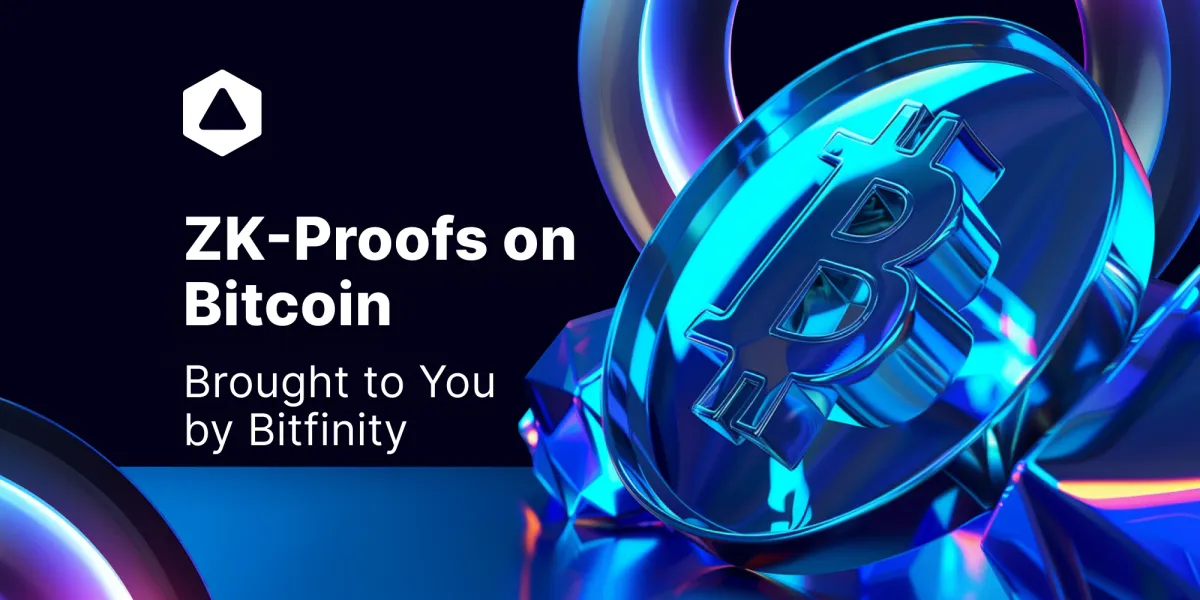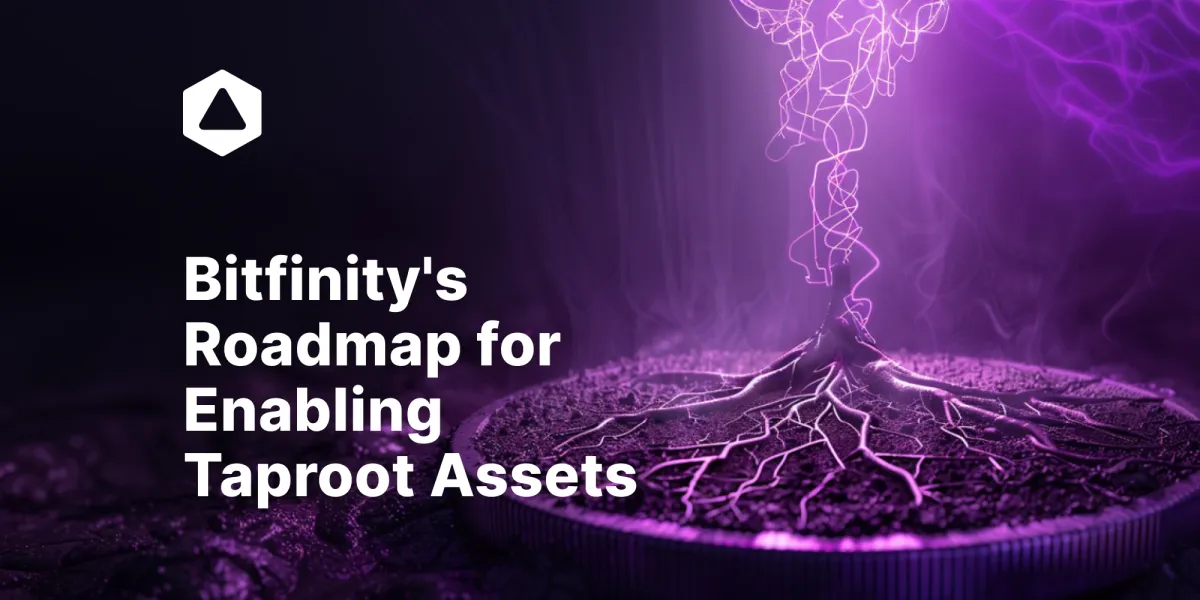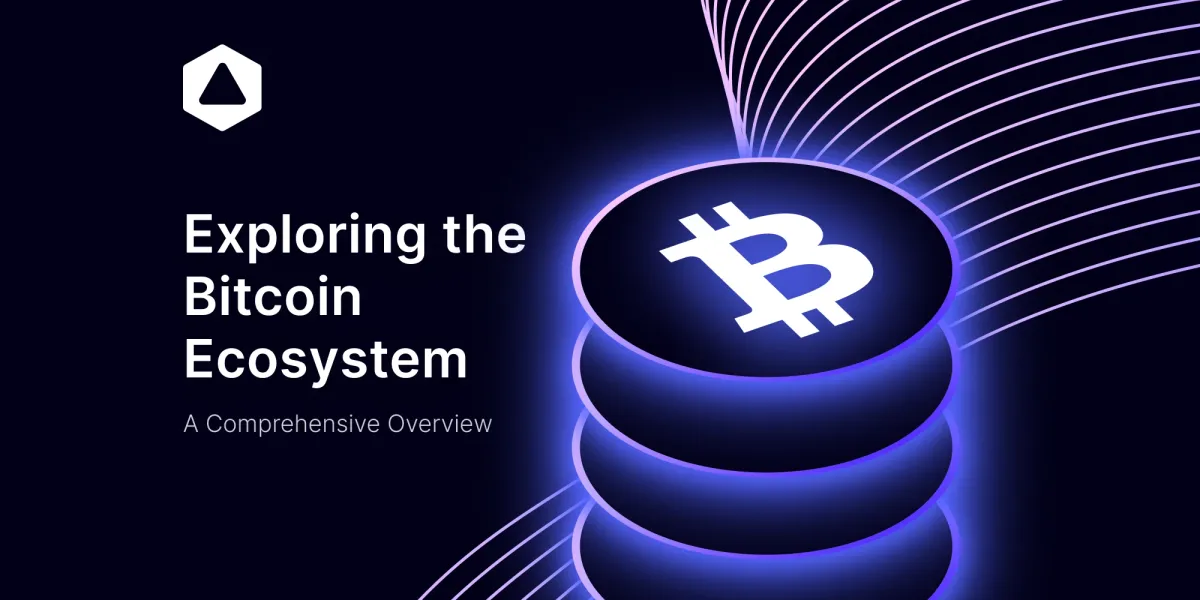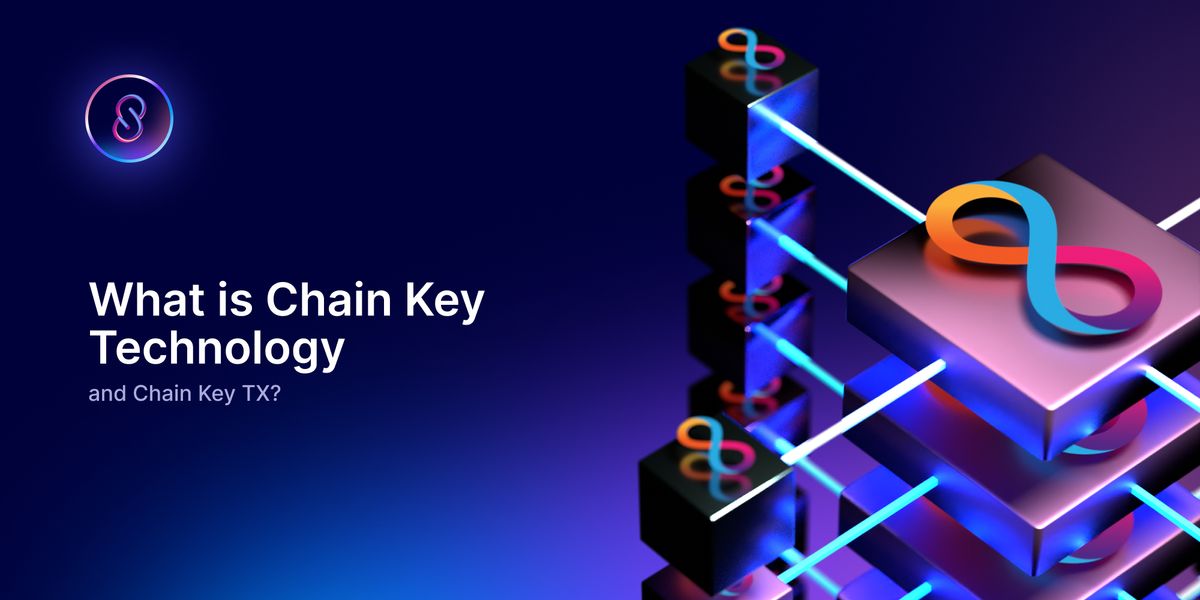Bitcoin Rollups: The Ultimate Guide to Layer 2 Scalability Solutions
Discover how rollups offer yet another way to tackle Bitcoin's scalability issues. Explore various rollup projects and learn about the challenges they face in this comprehensive guide. See how Bitfinity positions itself among these solutions and why it presents a better proposition.

Bitcoin's current throughput is limited, processing only up to 7 transactions per second (tps). While this is insufficient for a Layer 1 blockchain and in contrast to other blockchains like Solana that can handle up to 2,700 tps, and traditional financial companies like Visa that process 1,667 tps, it is far from ideal.
The need to make Bitcoin scalable cannot be overstated and to tackle this issue, several solutions have been introduced that natively solve problems for Bitcoin.
In our series, where we focus on explaining different layer two solutions, we will this time focus on rollups. But first, let's cover some key concepts to help you better understand the topic of rollups.
What Are Rollups?
Rollups are Layer 2 scaling solutions designed to address the limitations of Layer 1 (L1) blockchains. A Layer 1 blockchain, like Bitcoin or Ethereum, is the base layer of the blockchain ecosystem, providing the fundamental security and settlement for all transactions.
As their name suggests, rollups bundle multiple transactions into a single batch, which is then processed off the base blockchain. The results of these transactions are periodically submitted to the base blockchain in a compressed form for settlement.
Settlement refers to the finalization of transactions on the blockchain, ensuring their permanence and security.
This process reduces the number of transactions that need to be directly recorded on the base blockchain, significantly increasing throughput and lowering costs.
While rollups have proven effective in practice, two major types have gained significant traction: Optimistic Rollups and Zero-Knowledge (ZK) Rollups. Each type takes a different approach to the final settlement.
Understanding how these rollups work is crucial to recognizing their importance to Layer 1 blockchains like Bitcoin.

Optimistic Rollups
Optimistic Rollups operate on the assumption that every transaction processed off the base chain is valid, which is why they are called "optimistic." The base chain keeps a record of the rollup's current status, and this status is updated every time a new batch of transactions is processed.
After the submission of each batch of transactions, there is a challenge period—typically 7 days—during which anyone can dispute the validity of the transactions.
If a challenge is made, the disputed transactions are re-executed or rolled back. If the challenge is found to be valid, the fraudulent transactions are reversed, and penalties are applied to the sequencer who submitted the batch. An example is Arbitrum, as we mentioned in previous articles already.

Zero-Knowledge Rollups
Zero-Knowledge Rollups, also known as validity proofs, work differently from Optimistic Rollups. Once a batch of transactions has been processed off the base chain, a validity proof must be submitted to verify the legitimacy of these transactions.
There are two parties involved in validity proof: the prover, who sends the transaction, and the verifier, who receives the transaction. As the name implies, the goal of Zero-Knowledge Rollups is to verify transactions without revealing their details to either party, adding an extra layer of security.
The verifier generates questions regarding the transaction, which the prover must answer. The Zero-Knowledge contract acts as a mediator between the prover and verifier, determining whether the prover provides the correct answers. Using this mechanism, the validity of the entire batch of transactions is proven before being posted on the main blockchain.

Difference Between Optimistic and Zero-Knowledge Rollups
Unlike Optimistic Rollups, Zero-Knowledge Rollups do not require a challenge period for disputing the validity of transactions. This is because Zero-Knowledge Rollups uses a unique system where all transactions are verified before being added to the base blockchain or Layer 1.
Optimistic Rollups allow for a specific time frame, typically up to 7 days, during which the validity of transactions can be challenged. This discrepancy in validation methods makes processing transactions on Zero-Knowledge Rollups faster than on Optimistic Rollups.
Due to the unique validity proofs required by Zero-Knowledge Rollups, they are complex to build and require extensive resources to maintain over time. Optimistic Rollups, on the other hand, do not involve the high level of cryptography needed for Zero-Knowledge Rollups, making them easier to construct.
While Optimistic Rollups and Zero-Knowledge Rollups are the most commonly discussed rollup types, sovereign rollups are also gaining popularity. Let’s explore what sovereign rollups are and their value.
Sovereign Rollups
Sovereign rollups, as their name implies, take full control over specific parts of the overall architecture. They run their own consensus and transaction settlements (proof verification), relying only on the base blockchain or another Layer 1 blockchain for data availability.
Data availability ensures that all necessary transaction data is accessible for verification and reconstruction on the blockchain.
While Optimistic and Zero-Knowledge Rollups can significantly scale transaction processing, they face certain limitations. For example, introducing new features or protocols can be challenging due to scalability issues and increased complexity.
By handling transaction settlements through the nodes/P2P network of the sovereign rollup, the overall transaction costs are significantly reduced. Additionally, sovereign rollups can implement soft forks and scale features or protocols without being constrained by the base blockchain.
Despite their autonomy, sovereign rollups benefit from the security of the base blockchain or Layer 1 they depend on for data availability and final settlement.
This setup provides enhanced security compared to Optimistic and Zero-Knowledge Rollups, which are more vulnerable to hacks due to their reliance on smart contracts.
With these concepts and distinctions clarified, understanding Bitcoin rollups becomes much easier.
Understanding Bitcoin Rollups
Bitcoin rollups are Layer 2 scaling solutions that aggregate multiple transactions off-chain and periodically submit compressed transaction data to the Bitcoin blockchain.
They aim to increase transaction throughput, reduce fees, and maintain Bitcoin's security by processing transactions off-chain while anchoring their validity and state on the main blockchain.
Bitcoin rollups became feasible with the implementation of the Bitcoin Taproot update. Taproot was a soft fork of the Bitcoin blockchain that introduced changes without affecting the core of the chain.

These changes were designed to be compatible with existing Bitcoin miners, allowing them to continue operating without needing an immediate upgrade, while miners aware of Taproot can take advantage of its new features.
Taproot enabled the development of complex smart contracts on the Bitcoin blockchain, which rollups use to function. Since then, several rollup projects have emerged, each offering unique approaches to solving Bitcoin's scalability problem.
Examples of Bitcoin Rollup Projects
Several rollup projects are actively working to expand the Bitcoin blockchain's capabilities. This comprehensive overview will detail the significant contributions of these rollup initiatives to the Bitcoin ecosystem.

Bison Network
Bison Network is the first sovereign Bitcoin rollup utilizing a zero-knowledge model to address scalability issues on the Bitcoin blockchain. It employs immutable data storage and smart contract authentication to anchor proofs.
The network comprises four major components: Bison OS for processing and verifying transactions, the prover and verifier, the L2 dApp for user interaction, and a bridge ensuring asset transfer and security.
BOB (Build on Bitcoin)
BOB uses DAI as its oracle, providing necessary operational data. Its architecture includes the Rollup layer, BOB SDK, Bitcoin bridge, EVM core, and zkEVM rust.
Rollux
Rollux is an optimistic rollup scaling solution that inherits the Bitcoin blockchain's security through Syscoin, a Layer 0 blockchain, and merge mining. Rollux utilizes BitcoinDA, or proof of data availability, to scale Bitcoin.
BiopLab
BiopLab is an optimistic rollup focusing on scaling Bitcoin and introducing enhanced functionality to the Bitcoin network. Utilizing the Bitcoin Virtual Machine (BVM) and smart contracts, BiopLab has made significant strides in sectors including DeFi, NFTs, GameFi, and SocialFi.
Rollkits
Rollkits is a sovereign rollup framework for developers, enabling the deployment of rollups for different blockchains. It addresses scalability issues while introducing customization and security. Rollkits use the Celestia blockchain for data availability.
ROOS
ROOS is a Bitcoin scaling solution utilizing zero-knowledge (zk) rollups, operating in parallel with zkEVM to provide high throughput, stability, and scalability. It relies on Bitcoin’s proof of work (PoW) for security and is Ethereum-compatible, enabling cross-chain interaction.
SatoshiVM
SatoshiVM is a Bitcoin zero-knowledge (zk) rollup that enhances Bitcoin's scalability. It uses Bitcoin for transaction fees and ZK fraud proofs, increasing Bitcoin's interoperability with other chains.
LumiBit
LumiBit is a Layer 2 scaling solution using Scroll zk rollup to scale Bitcoin, offering higher throughput, increased scalability, and EVM compatibility. LumiBit relies on Bitcoin for data availability and is regarded as a BTC-native account abstraction.
B2 Network
B2 Network is a Bitcoin Layer 2 scaling solution utilizing zero-knowledge (zk) rollups with Bitcoin as the settlement layer.
Babylon Chain
Babylon Chain aims to secure rollups through Bitcoin using three primary protocols: Bitcoin Staking Protocol, Bitcoin Timestamping Protocol, and Bitcoin Data Availability Protocol.
Citrea
Citrea is a zero-knowledge rollup that scales Bitcoin and uses zero-knowledge proofs to validate transactions. It utilizes a two-way peg system to bridge between the Bitcoin network and Citrea and includes a $cBTC.
Sovryn
Sovryn Layer is a decentralized Bitcoin application leveraging merge mining with Rootstock (RSK) and using Built on Bitcoin (BOB) as native rollups. Sovryn allows users to trade, swap, provide liquidity, stake, lend, or borrow funds.
Bitlayer
Bitlayer is an optimistic rollup scaling solution for Bitcoin that leverages Bitcoin's security via BitVM and onboard Turing completeness to make it compatible with the EVM environment.
Challenges Faced by Rollups
Still, there are several issues that can be countered when projects choose Rollups as layer two solutions, we take a look at some of them:
1) Composability Issues: Transactions involving multiple protocols require all involved protocols to be deployed on the same rollup to interact seamlessly. This can complicate operations involving different protocols not on the same rollup, limiting the interoperability and functionality of decentralized applications (dApps).
2) Fractured Liquidity: The liquidity available on Layer 1 protocols, such as Uniswap or Aave, must be shared between Layer 1 and various rollup implementations if new funds do not continuously flow into the ecosystem.
This division can lead to higher slippage and poorer trade execution as liquidity is spread thinly across multiple layers and rollups.
3) Winners and Losers: The division of liquidity means some rollups and protocols will perform better than others, leading to certain rollups thriving while others become underutilized or turn into "ghost towns."
In the short term, the ecosystem might not support all scaling solutions effectively, resulting in uneven growth and adoption across different rollups.
4) Data Availability: Ensuring data availability is important for rollups since off-chain data must be retrievable for verification and security. If the data is not available when needed, it can compromise the integrity and functionality of the rollup.
5) User Experience: Interacting with rollups can introduce additional complexity for users, such as needing to bridge assets between Layer 1 and Layer 2 or understanding the nuances of different rollup solutions. This can affect user adoption and overall experience.
Where Does Bitfinity Stands Compared to Roll-Ups?
Rollups are often discussed as a pivotal solution for scaling Bitcoin because they bundle multiple transactions off-chain and then post them to the main blockchain in batches. This approach can significantly enhance the scalability of Bitcoin by reducing the load on the main chain, thus enabling faster and cheaper transactions. However, despite their potential, rollups are not without challenges, such as issues with composability and fractured liquidity.
In contrast, Bitfinity takes a different approach to tackle Bitcoin's scalability constraints. Rather than relying on rollups, Bitfinity has developed an EVM-compatible Layer 2 solution that leverages the Internet Computer’s ChainKey technology.

This allows for direct and trustless interoperability between blockchains. The Bitfinity EVM achieves impressive throughput, theoretically competitive with networks like Solana, without utilizing rollups.
This divergence in strategy highlights that while rollups can contribute to scaling solutions, they are not the sole method available, and Bitfinity’s EVM offer substantial scalability while addressing some of the inherent limitations found in rollup-based approaches.
Conclusion
Bitcoin's current processing capacity of up to 7 transactions per second starkly contrasts with the needs of a global financial system and the capabilities of other high-throughput blockchains like Solana or traditional payment processors like Visa. To address this scalability challenge, various innovative Layer 2 solutions such as rollups have been developed.
Despite their potential, rollups come with challenges such as composability issues, fractured liquidity, and complex user experiences. In contrast, Bitfinity offers a distinct approach through its EVM-compatible Layer 2 solution, leveraging the Internet Computer’s ChainKey technology for direct interoperability between blockchains, aiming to provide a scalable, efficient alternative to traditional rollups competitive with even the fastest blockchains.

Connect with Bitfinity Network
Bitfinity Wallet | Bitfinity Network | Twitter | Telegram | Discord | Github

*Important Disclaimer: The information on this website is provided for general informational purposes only and should not be considered financial advice. While we strive for accuracy, Bitfinity does not endorse and is not responsible for any errors or omissions or for results obtained from the use of this information. Views expressed herein may not reflect those of Bitfinity. External links are provided for convenience and verification of information is recommended before taking any actions based on content found here.



Comments ()